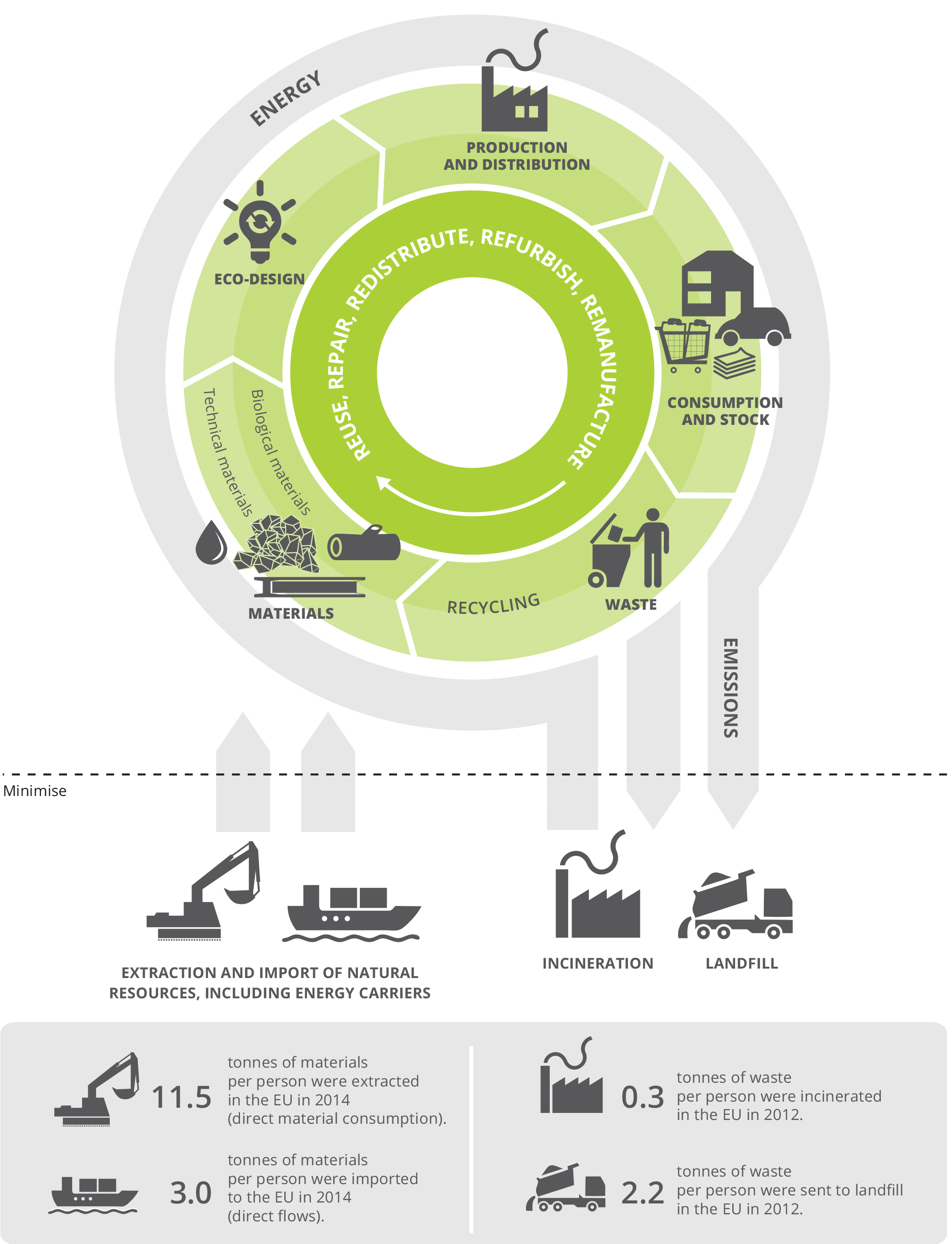Introduction: Waste in the EU economy – from linear to circular economy
Circular Economy (1/2)
The 7th Environmental Action Programme thus logically stresses that there is “considerable potential” for improving waste prevention and management to make better use of resources, open up new markets, create new jobs and reduce dependence on imports of raw materials. Quite interestingly, in order to achieve these goals, it looks first and foremost at the “full implementation of Union waste legislation throughout the Union”. Inter alia, market-based instruments and other measures that promote prevention, recycling and re-use should be applied much more systematically throughout the Union, while the development of non-toxic material cycles should also be supported. Overall, legislative steps should be taken as well as existing legislation implemented so as to move towards a lifecycle-driven ‘circular’ economy, “with a cascading use of resources and residual waste that is close to zero” (paragraphs 39-40).
A recent study on the Circular Economy in Europe by the EEA explores the concept of a circular economy: “unlike the traditional linear take-make-consume-dispose approach, a circular economy seeks to respect planetary boundaries through increasing the share of renewable or recyclable resources while reducing the consumption of raw materials and energy and at the same time cutting emissions and material losses.” The means to achieve such a project are as diverse as eco-design and sharing, reusing, repairing, refurbishing, and recycling existing products and materials (page 6).

Source: EEA Report No 2/2016
Click here to enlarge the image!